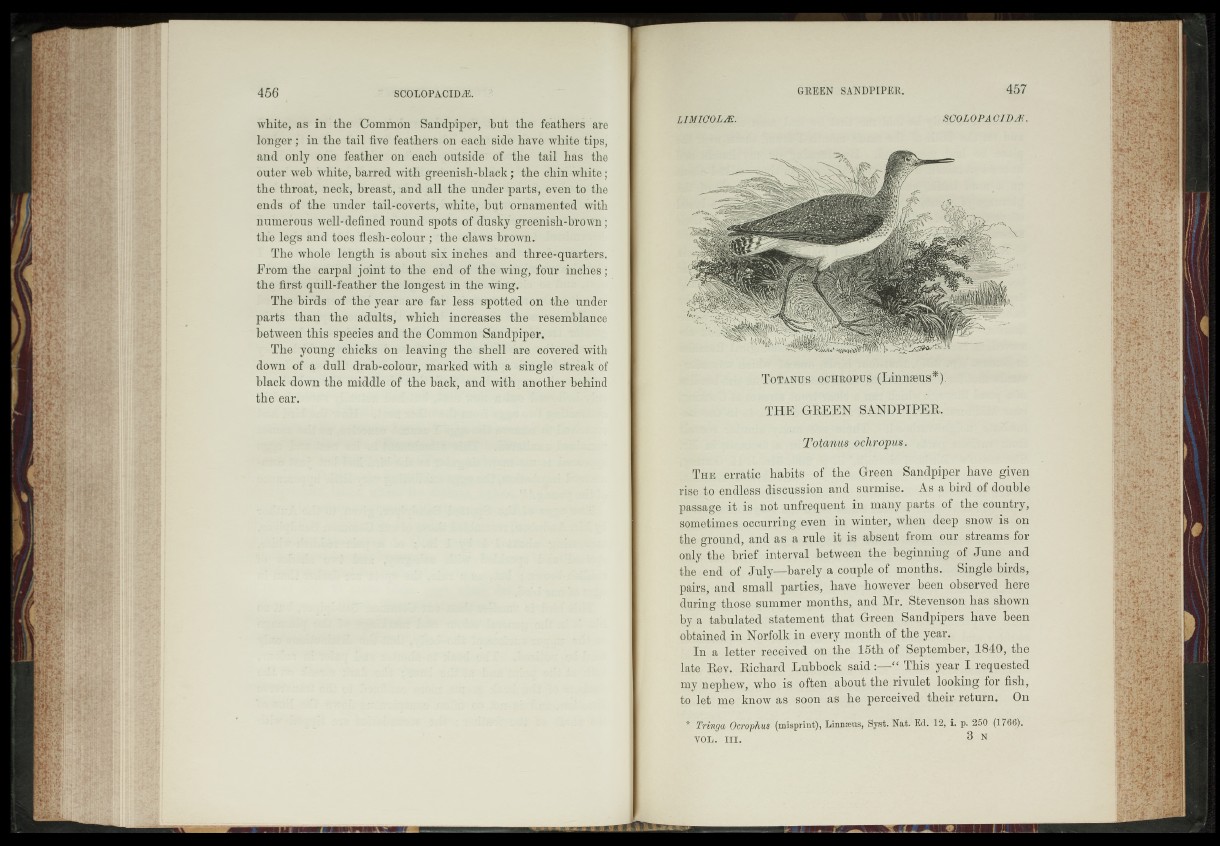
white, as- in the Common Sandpiper, but the feathers are
longer; in the tail five feathers on each side have white tips,
and only one: feather on each outside" of the tail has5'the
outer web white, barred with greenish-black; the chin white ;
the throat, neck, breast, :and all the under parts, even to the
ends of the under tail-coverts, white;: but: ornamented with
numerous well-defined round spots of dusky greenish-brown;
the legs and toes fiesh-colottr-; 'thexclaws brown, I
The whole length is about six inches and tbree-qfr'&rters.
From the carpal joint'.t© the end of the wing,-four inches;
the first quill-feather the langestrin the wing. »
The birds of the’ year are far less spbtted :on the under
parts than the radults,: which increases the resemblance
between this species and the GommonoSandpiper. -
The young-chicks on "leaving the^shell are eoffe£ed-With
downliof a dull drab-colour, marked with'taf single'streak of
black down the middle of the back, and with another behind
the ear.
Totals ©cheopus* (Linnaeus*)'
THE GREEN. SANDPIPER.
- Tatemj^s^QfihropuSf, •
, erratic habits I # the Green Sandpiper have given,
rise to e:n$l,ess-discussion and surmise. As a bir^ pf ^ub-lg
passage it Js^not unfrequent in many,; of the country,
aopjetimes opening in winder, when deep snqw^is on
ground, and as a rule it. is absent feprn streains for
only tjte, brief^jptervai between theE beginning 'of June ,and
thp end jgg July—barely a cppple of. months, Single birds,
pane, and small parties* have^hoFeye^ obseryed^here
durjug those summer months* ajid Mr., Stevenson has shown
by |a tabulated statement that Gr:|,eft .Sandpipers have been
obtained ins Norfolk in ej^ry. month of the.yeaiVt |
In f ^ t t f t 1; : ^ :°f September,J
late, ^ey,." Richard Lubbock said ^ r “ This year I, requested
who is often aboutjjm , rivulet looking dor fish,
to Jet me know as seem as. be.,perceived- thei^ return. On
Tringa “QqropJws?(misprint)® Linnaeus, Syst. N^t’AEd. 12, i. p. 2# ft (lf06)V _
m m m m. I 3 u